Discovering bed bugs in your home requires fast action, but these resilient pests can be notoriously difficult to eliminate. They’re small, flat, reproduce quickly, and have developed resistance to many traditional pesticides. Bed bug strips offer an innovative solution for tackling these blood-sucking insects, but not all pest strips are effective against bed bugs. This guide explores everything you need to know about bed bug strips, how they work, and how to use them safely and effectively.
Quick Picks: Best Bed Bug Strips
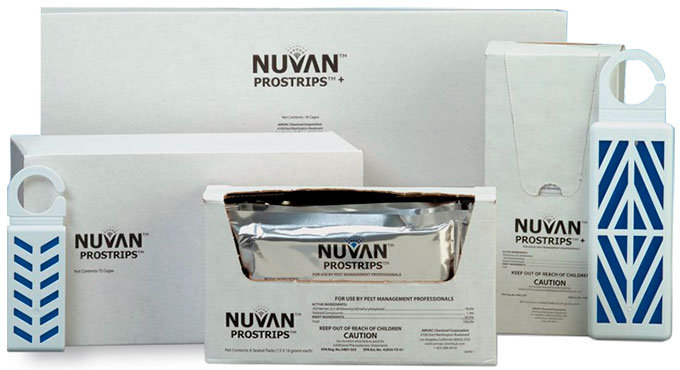
Editor’s Choice

People’s Choice
How Do Bed Bug Strips Work?
Pesticide strips are designed to kill various household pests, but not all are effective against bed bugs. For best results, look specifically for products labeled for use against bed bugs. Based on their mode of action, bed bug strips can be categorized into two types:
Slow Release Strips
Most effective strips contain dichlorvos (DDVP) or permethrin as their active ingredient. These chemicals are released as an invisible, odorless vapor over time, killing bed bugs in enclosed spaces.
DDVP is highly effective against bed bugs and diffuses excellently through enclosed spaces. A single block can emit vapors that kill and repel bugs within 1,200 cubic feet for up to 4 months.
Pest strips containing DDVP provide 100% bed bug control and are lethal to all life stages, including resistant eggs.
Glue Strips (Bed Bug Traps)
These strips contain strong adhesive that captures bed bugs, preventing them from escaping. Some may include attractants like pheromones, heat, or carbon dioxide.
Glue strips can be used to prevent bugs from reaching your bed, trap bugs trying to move in or out of hiding spots, detect potential infestations, and gauge the effectiveness of your control methods.
DDVP Safety Information
Dichlorvos (DDVP) is the active ingredient in most effective bed bug strips. While highly effective against bed bugs, it’s important to understand its safety profile:
- EPA-Registered: DDVP is registered for pest control use but should always be used according to label directions.
- Ventilation Required: Always thoroughly ventilate spaces after treatment and before reoccupying.
- Short-Term Exposure Symptoms: Headache, nausea, dizziness, or respiratory irritation may occur if overexposed.
- Long-Term Safety: Avoid prolonged or repeated exposure; always follow manufacturer’s guidelines for treatment duration.
- Keep Away From: Food, children, pets, fish tanks, and areas where people spend significant time.
- Medical Attention: Seek immediate medical help if you experience symptoms after using products containing DDVP.
When used properly in unoccupied spaces and sealed environments, DDVP pest strips can be used safely and effectively for bed bug control.
How to Use Bed Bug Strips Safely
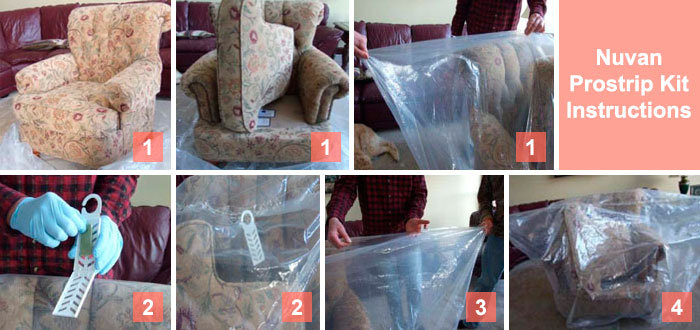
Insecticidal strips will only be effective if used correctly. Improper use can make them ineffective and potentially affect your health. Excessive exposure to the vapors can cause symptoms like nausea, vomiting, headaches, restlessness, muscle tremors, and sweating.
Safety Precautions When Using Bed Bug Strips
- Don’t overuse strips. A single 16-gram strip treats 100-200 cubic feet. For example, a walk-in closet measuring 6′ × 12′ × 8′ (575 cubic feet) would need 3-5 strips.
- Don’t use strips in areas with unwrapped food like kitchens and storage areas.
- Don’t use strips in spaces occupied by people or pets for more than 4 hours daily.
- Don’t cut strips into smaller pieces or remove them from their holder.
- Don’t allow children or pets to play or sleep in treated areas.
- Wash your hands thoroughly with soap and water after handling strips.
Where to Apply Bed Bug Strips
When applying strips, always use gloves to prevent skin contact and carefully follow all instructions on the product package. Here are effective places to use bed bug strips:
Near Infestation Hot Spots
Placement is key to success with glue strips. Position them near potential or known infestation points, such as underneath sofas and beds, around bed legs, and along walls.
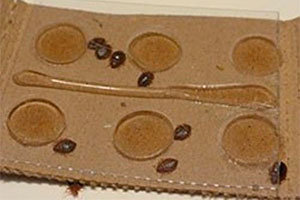
Upholstered Furniture
Upholstered furniture is difficult to treat as bed bugs easily hide deep in the upholstery where treatments like steam cleaning may not penetrate thoroughly.
To treat upholstered furniture:
- Encase the furniture in a large plastic furniture bag
- Place one strip inside the bag
- Seal the bag tightly
- Leave unopened for one week
Luggage
If you encounter bed bugs while traveling, you might bring them home in your luggage. To eliminate them:
- Unpack your entire suitcase outside your home when you return
- Wash your clothes in the hottest water possible and dry on high heat
- Put your suitcase and a pest strip in a large garbage bag
- Seal the bag and leave it for at least 2 weeks
- For luggage with many seams, pockets, and hiding places, you may need to leave the bag sealed for 4-6 weeks
Other Personal Items
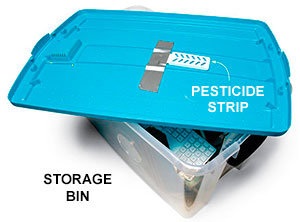
You can also use pest strips to treat non-washable items or those that can’t be treated with heat or liquid pesticides, such as shoes, books, electronics, and appliances.
Place these items in a sealed plastic bag with a pest strip and leave them for a week.
For washable items treated with pest strips, clean them with soapy water before reusing. Air out all treated items (both washable and non-washable) for at least 2 hours before using them.
The Best Bed Bug Strips
Based on our research, these two brands stand out as the most effective options for bed bug control: Based on our research, these two brands stand out as the most effective options for bed bug control: Bug Repel Pro and EcoGuard. Both products utilize a combination of powerful ingredients that not only eliminate existing infestations but also offer long-lasting protection against future outbreaks. In addition, they incorporate some of the best essential oils for bed bugs, such as peppermint and lavender, which act as natural repellents. By choosing these brands, you can effectively safeguard your home while opting for a more environmentally friendly solution.
Nuvan ProStrips
Editor's ChoiceHow Does It Work
How to Use
- For treating enclosed spaces, hang or place strips following the cubic footage guidelines (one 16g strip treats 100-200 cubic feet)
- For treating personal items or furniture, place in a sealed bag with the strip for 1-2 weeks
- For items with many hiding places, extend treatment time to 4-6 weeks
- Always follow safety precautions and don't use in occupied spaces
- Highly effective against all bed bug life stages including eggs
- Works on pyrethroid-resistant bed bugs
- Penetrates deep into cracks and crevices
- Provides protection for up to 4 months
- More expensive than some alternatives
- Can leave an intense odor on treated items
- Cannot be used in occupied spaces or food areas
Hot Shot No-Pest Strips
People's ChoiceHow Does It Work
How to Use
- Place or hang strips in enclosed, unoccupied spaces
- One strip treats a 10×13-foot room with an 8-foot ceiling
- For treating personal items, place in sealed bags with the strip
- Do not use in spaces occupied for more than 4 hours daily
- Keep away from food preparation areas
- Easy to use with included hanging hook
- Effective against bed bugs and other household pests
- Provides up to 4 months of continuous protection
- Affordable option for bed bug control
- May take longer to kill bugs than some alternatives
- Cannot be used in occupied living spaces
- Requires careful handling and safety precautions
| Feature | Nuvan ProStrips | Hot Shot No-Pest Strips |
|---|---|---|
| Active Ingredient | DDVP (Dichlorvos) | DDVP (Dichlorvos) |
| Treatment Area | One 16g strip treats 100-200 cubic feet | One strip treats a 10×13-foot room with 8-foot ceiling |
| Duration of Protection | Up to 4 months | Up to 4 months |
| Kill Time | 2-3 days for adults/nymphs; 7 days for eggs | Varies, typically longer than Nuvan |
| Best For | Severe infestations, treating personal items, resistant bed bugs | General treatment, preventative control, budget-conscious users |
| Price Point | Higher | Lower |
| Special Features | Professional-grade formula, works on pyrethroid-resistant bed bugs | Includes hanging hook, more widely available in retail stores |
Conclusion
Bed bug strips can be an effective part of your pest control strategy when used correctly and safely. For best results, follow all manufacturer instructions carefully, use proper protection like gloves when handling the strips, and give the products sufficient time to work.
While these products have raised some controversy due to potential health effects, they are safe and effective when used as directed. Remember to give bed bug strips adequate time to work—anywhere from several days to a few weeks, depending on the severity of the infestation and the specific items being treated.
Frequently Asked Questions About Bed Bug Strips
How long do bed bug strips last?
Most bed bug strips containing DDVP remain effective for up to 4 months in enclosed spaces. However, when used in sealed bags for treating personal items, one strip is typically effective for multiple treatments. Always check the manufacturer’s instructions for specific product duration.
Are bed bug strips safe to use around children and pets?
No. Bed bug strips should never be used in spaces where children, pets, or people spend more than 4 hours daily. The strips release pesticide vapors that can cause health issues with prolonged exposure. Only use them in unoccupied spaces or for treating sealed items.
Do bed bug strips kill all stages of bed bugs?
Yes, DDVP-based strips are effective against all life stages of bed bugs, including eggs. However, eggs may take longer to kill (about 7 days) compared to adult bed bugs (2-3 days). For complete elimination, leave strips in place for at least one week.
Can I use bed bug strips in my bedroom?
Bed bug strips should not be used in occupied bedrooms or any space where people sleep or spend significant time. Instead, you can use them to treat specific items (like luggage or clothing) in sealed bags, which can then be returned to the bedroom after proper airing out.
Will bed bug strips work alone, or do I need additional treatments?
For most infestations, bed bug strips work best as part of a comprehensive treatment plan. While strips are effective for treating specific items and spaces, combining them with other methods—such as heat treatment, professional pesticide application, encasements, and thorough cleaning—will provide the best results for complete elimination.
How soon will I see results after using bed bug strips?
You may begin to see dead bed bugs within 2-3 days of treatment. However, complete elimination, especially of eggs, can take up to 7 days or longer depending on the severity of the infestation and how well the space is sealed. For heavily infested items with many hiding spots, allow 2-6 weeks of treatment.
Can bed bugs become resistant to the chemicals in pest strips?
One advantage of DDVP-based strips is that they are effective even against bed bugs that have developed resistance to pyrethroids (found in many other insecticides). Currently, widespread resistance to DDVP among bed bugs has not been reported, making these strips a reliable treatment option.
Is there a specific temperature range where bed bug strips work best?
Bed bug strips work most effectively in average room temperatures (65-80°F). Extremely cold temperatures may slow the release of vapors, while very hot conditions might cause too rapid release. For optimal effectiveness, use strips in temperature-controlled indoor environments.

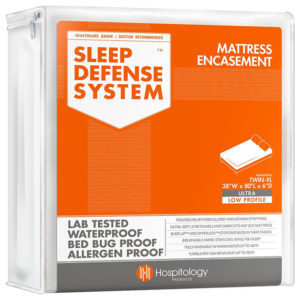


I am one of those who does not get a bump when bitten. I was occasionally sleeping on the infested couch and just though they were harmless beetles. They might wake me up from their crawling, but not bites and never once left any marks. I’m much smarter now. When squished, the bed bug leaves a red stain if fed and a brown stain if hungry (old blood). My couch is encased in bags outside and will give it the pest strip treatment ASAP. Thanks for the info.
Hi. Not everyone reacts to bedbugs, so if only 1 person has red bumps, itchiness, skin feels inflamed/hot, this still might be bedbugs.
Buy bedbug detectors to put under the legs of your bed, to catch any bugs that are climbing up to bite you at night. And inspect the edges and seams of your mattress for black specks and spots, which are what bedbugs leave after they feed. Buy a bedbug-proof mattress casing, too, to trap any bugs already in there and keep others from getting in. Keep this casing on for at least 18 months, which is how long a bedbug can survive without feeding.
You should call an exterminator to inspect; they know where to look for these bugs. And until then, vacuum daily (throw out the bag immediately after vacuuming and shake out your vacuum outside); if you have a steamer, use it to steam your floors and chairs and other furniture, since steam kills bugs and eggs; wash all your clothes after wearing and dry them on high heat for at least 45 minutes to an hour. Anything that can’t be washed can be sealed in a bag with one of these pest strips. Leave enough room in the bag that you have a big bubble of air in there, for the vapours to move around, and shake the bag lightly a few times a day to get air inside flowing. Keep the bags closed for 2 weeks (not 1 week); it takes 10 days to 2 weeks to kill eggs.
Good luck!
Bed bugs will choose one preferred host over another for their feeding. Women generally have a slightly higher skin temperature than men, so often couples will find that the woman has bites on her skin but not her husband. Bed bugs prefer to attack the legs mostly. Your description definitely makes me suspect bed bugs. Purchase a bed bug detector like the Ortho Bed Bug B Gon Max Traps or similar and follow the instructions.
My husband and I think we have bed bugs but are not sure cause I have red bumps up and down my legs now just getting these red bumps on both arms and back and feet but my husband does not have any red bumps but 1 that he woke up with this morning I had mine for months and these red bumps go away at the end of each day towards evening that’s why we’re not sure I went to the Dr this morning and the Dr thinks that’s what we have but is stumped and did say he’s suspicious as to what these little red bumps are cause there not chickenpox he said plus I’ve already had them because my husband and I sleep in the same bed and he has only one red bump is why the Dr is suspicious and thinks that’s maybe not what these red bumps are PLEASE HELP ME.
You need enough air in the treatment space to allow vapours to get into every nook and cranny; using a fan on low setting will help distribute the vapours. So unless your closet has only a few things in it, and these items have enough air space between them to allow for proper circulation, this likely won’t be effective.
Leaving a sealed -shut home for a minimum of one week, with enough strips to cover the treatment area (see package for how much area a strip will cover; it’s something like 900-1200 cubic feet per 65 g strip), is a much better idea. Just remember to open drawers, move items away from walls, get rid of clutter, pack clothes in plastic, etc., remove the mattress from the bed, and do all the prep needed so the vapours can reach the small spaces where bedbugs are likely to hide. It takes hours and hours to properly prep for this.
re Freezer: Unless your freezer stays at a constant -18C (I think – check this online first) with no temp. fluctuations, then no, popping items in the freezer is not effective. Standard kitchen freezers, especially, will not do the job. And even the specialized freezers need several days at minimum to kill any bedbugs hidden in items. I’m not sure how effective this method is for eggs, either.
Did this work for you? I would be happy to leave strips around the house and close all doors and windows and leave for a week. Alternatively, can we place any items we have in a closet with the strips and tape around the door to create a seal?
Does placing items in a freezer also kill bed bugs?
Hi Inga,
Thank you for your very clear and informative site. We live in NYC and started getting bed bug bites about 2 and a half weeks ago. We went through this experience 10 years ago after staying in an infested hotel room and unwittingly brought bed bugs home, despite our best efforts. At that time, we called in professionals to fumigate our small one-bedroom apartment, but continued getting bites. After a couple of weeks, we got advice from an out of town pest control professional to use the hot shot no pest strips in the bedroom, seal up the apartment as best we could, and leave for 4 days (we threw out the strips when we returned). We did that and there were no more bed bug problems upon our return. Now, we are about to undertake a similar plan of action and leave the apartment for 5 days, after putting out the no pest strips. Our question is: we now have a lot more clothing and boxes which are impossible at the moment to go through and/or remove. Will the pest strips be effective if the area around the bed is cluttered with many bed bug hiding places? Can the no-pest strips’ vapor reach “into the clutter” or draw the bugs out to be killed? For several reasons, we are unable to use a professional service right now and have to undertake this on our own. We are asking this just to get some idea of what is possible and to hear an informed opinion and do not consider any answer to this question as professional advice in any way. If you can respond, thank you so much in advance.
Regards,